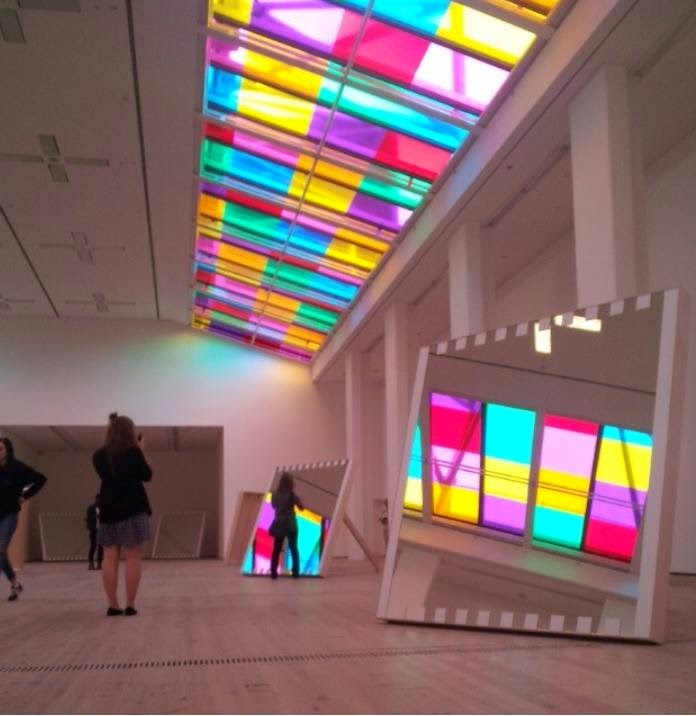Abstract- A term generally used to describe art, not representational.
Aesthetic- Characterised by a concern with beauty or good taste.
Appropriation- The intentional borrowing/ copying of visual things.
Assemblage- 3D composition made from non traditionally artistic materials and objects.
Avant garde- Innovative and new art that no one else has seen, peculiar and beyond us.
Allover painting- A canvas covered in paint edge- edge.
Bio-morphic- Living forms, abstract forms to turn things into living.
Bourgeois- Wealthy, expensive.
Chiaroscuro-The treatment of light and shade in art.
Classical/classicism- The principles embodied in architecture and literature.
Composition- Arrangement of elements, background, foreground and elements.
Conceptual Art- emphasising ideas and theoretical practices rather than visual form.
Consumerism- A preoccupation with and an inclination toward the buying of manufactured goods.
Cultural Icon- A person, symbol, object or place that represents a large group of people.
Diptych- Painting used in 2 halves.
Ephemera- Written things not meant to be kept.
Formal- Not concerned about the meaning, relating to shape and structure.
Genre- Certain type of style.
Globalization - Transformation of a local or regional phenomenon into a global one.
Hegemony-Dominance of one group or nation, things becoming the same.
Iconoclasm- The doctrine or practice of attacking settled beliefs or institutions.
Iconography- Adhering to typical conventions and imbued with symbolic meanings, etc cross and religion.
Irony- An expression that shows its own opposite for comedic value.
Motif- A distinctive and recurring theme in art.
Narrative- Story of the art.
Tuesday 28 October 2014
Friday 17 October 2014
Daniel Buren Catch as Catch can review
Whilst in Gateshead I had visited the Baltic and amongst all the artwork I had been most inspired by Daniels Burens work,'Catch as Catch Can', which includes a hall with ceiling windows replaced with tainted glass and numerous large mirrors on the floor, and as the sun shines through the colours are projected throughout the room, forever changing along with the angle of the sun and if clouds are dulling it or not.
I lost myself watching this exhibition due to the colours slowly edging from one place to another along with the sun and the constant changes of the shining brightness and vibrancy of the colours when the sun was at its peak and dulling of them when clouds passed, making me think about the possibilities that Buren could have been trying to make this work suggest.
The square mirrors lengths are 2001mm by 2001mm, which is iconic of his work as it matches his other work which is of straight lines as it is divisible by 8.7cm which is always the size of his lines, meaning that although it isn't a canvas or painting it still has a unique twist of his own signature marked on it.
The square mirrors lengths are 2001mm by 2001mm, which is iconic of his work as it matches his other work which is of straight lines as it is divisible by 8.7cm which is always the size of his lines, meaning that although it isn't a canvas or painting it still has a unique twist of his own signature marked on it.
Could it be change over time? Represented by the constant shifting colours projected over the ever moving crowds of audience wandering around the mirrors being drawn in to the art like moths to the flame, and dispelling away to other mirrors when the light formation changes to make a segment of the room more visually aesthetic than another. This could also be a metaphor for how people follow a light, or role model figure such as a celebrity or even god around, as it appeals to them for either its appearance or even beliefs with which they are associated with, and the easy changing mentality of how people are quick to swap when one becomes more appealing.
I definitely felt a religious atmosphere whilst the rays of colours shone on me, almost like something biblical with messages being sent from a higher power via the spectrum of vibrant colours being controlled by the natural power of sunlight, which somewhat seemed to simplify the world and clear my head and minimalise what worries I had.
As well as this, aesthetically I really enjoyed this piece, due to the amount of colours being thrown about the room and being ever moving, it had given me the impression of the room being a large canvas which was just using tainted glass, sunlight and reflection as its paint.
Buren had been quoted saying that this work was "a relationship with colour where, i think, the effect can be a kind of joy.", and compared it to an antidote for the "pretty dark world we live in".
I can understand how Buren represented this, by replacing the translucent windows to outside with vibrant colours, its as if he projected a different and better version onto us, with a hypothetical and metaphorical idea of what we could achieve if we wanted too, and that we are our own limitations for happiness.
As well as this, aesthetically I really enjoyed this piece, due to the amount of colours being thrown about the room and being ever moving, it had given me the impression of the room being a large canvas which was just using tainted glass, sunlight and reflection as its paint.
Buren had been quoted saying that this work was "a relationship with colour where, i think, the effect can be a kind of joy.", and compared it to an antidote for the "pretty dark world we live in".
I can understand how Buren represented this, by replacing the translucent windows to outside with vibrant colours, its as if he projected a different and better version onto us, with a hypothetical and metaphorical idea of what we could achieve if we wanted too, and that we are our own limitations for happiness.
Subscribe to:
Posts (Atom)

